|
Then, the Norman conquest of 1066 introduced the manorial system in which common land and common rights have their origins. The powerful lords were granted land by the King. These great estates (or 'manors' as they were called) formed the basis of the rural economy. Under the feudal system, the serfs and villeins who worked the land suffered the protection of the Lord in return for their labours. After the harvests had been gathered from the cultivated land of the manor, the open field strips and hay meadows were made available for common grazing. There might also be mineral extraction, cultivation or fishing rights over this land. This was crucial to our ancestors' survival. But over the centuries, more and more land was fenced off for private gain. Robin Hood fought for the preservation of the forests of his day - an early eco-warrior. In 1549, Robert Kett led a march of 20,000 people in Norwich, protesting against enclosure. When commons access rights to the land were removed by the Enclosures Acts, thousands died of starvation, and the rest were forced to live in the towns and cities. Between 1767 and 1867 seven million acres were fenced in. Only a nineteenth century campaign stopped the enclosure of Hampstead Heath and Wimbledon Common. Let's not forget how important the concept of common land is — many countries, such as America, do not have such a legal right of access, even if the UK's is a pale shadow of what it once was. Today's approachNowadays, common land is usually in private ownership, with rights of common over it. Common land is defined under the Commons Registration Act, 1965. Currently, the general public has no rights to roam on to common land, unless it is an urban common, or through access by public rights of way. The main features of common land are that it is generally open, unfenced and remote - particularly in the upland areas of England and Wales. However, there are some lowland areas of common, particularly in the south-east of England, that are important for recreational uses. There are 1.3 million acres of common land in England and Wales, registered in over 9,000 separate units covering all types of landscape and habitat - from the moors of Dartmoor and Bodmin in the south west, to the fells of the Lake District and mountains of Snowdonia, the Surrey heaths and the Norfolk coast. Soon we shall have the right to walk on all registered commons, subject to certain restrictions, under the Countryside and Rights of Way Act 2000. Town or Village GreensTown or village greens have a similar history to common land. However, they are defined separately for the purposes of the Commons Registration Act. Village greens are usually areas of land within defined settlements over which local inhabitants can indulge in lawful sports and pastimes. These might include organised or ad-hoc games, picnics, fetes and other similar activities. Whilst land forming town or village greens may be privately owned, many greens are owned and maintained by local Parish or Community Councils. Some greens may also have rights of common (i.e. grazing of livestock) over them. |
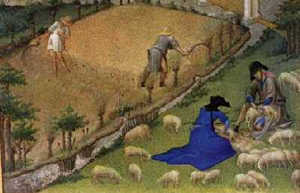 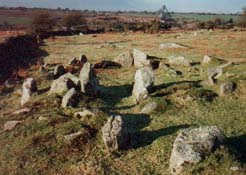 Top: Grazing on common land in Feudal times. Above: Bodmin Moor Below: The Peace Garden on Greenham Common, which had been taken over and used by the military during the Cold War. Bottom: Staindrop village green 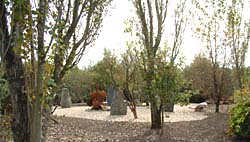 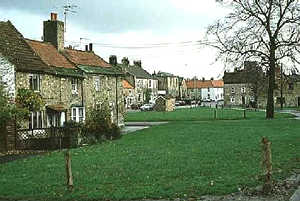 More information: The Open Spaces Society --> Case study: Colliers' Moss Common |
To commission work of this nature, contact David Thorpe.
back to About David
© David Thorpe 2006 All Rights Reserved
 A history of greenspace and parks
A history of greenspace and parks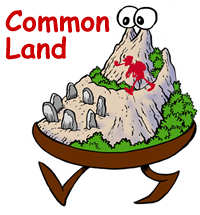 Over
a thousand years ago, when the UK was mostly wooded, the great forests
and rivers were open to everyone.
Over
a thousand years ago, when the UK was mostly wooded, the great forests
and rivers were open to everyone.